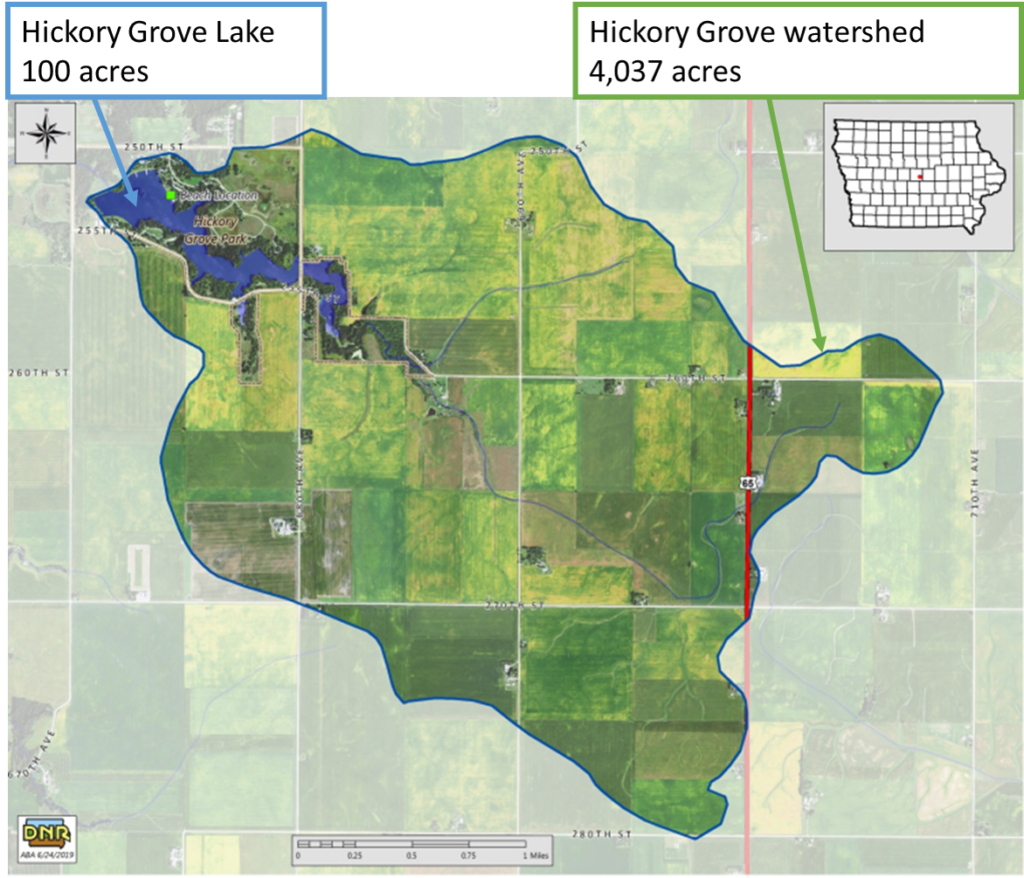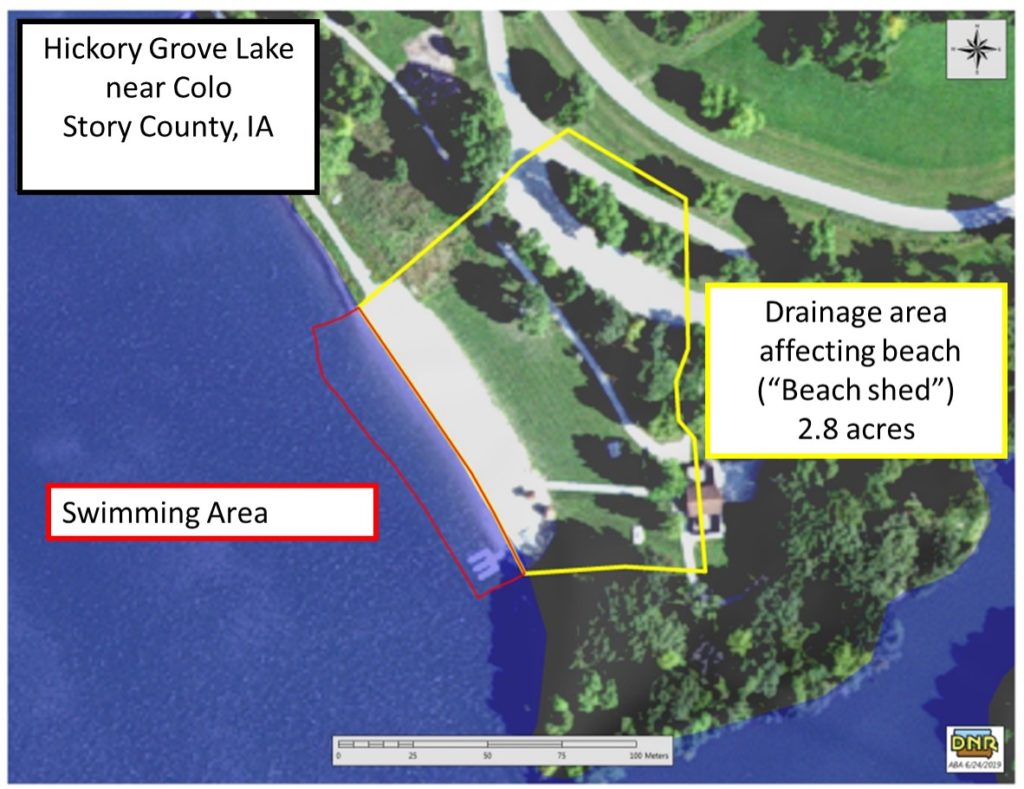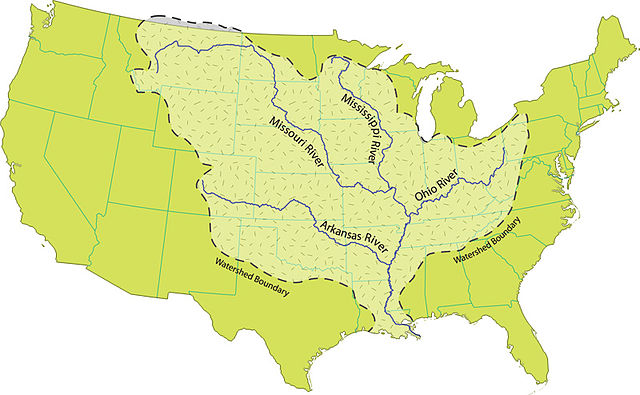You may have seen a “Swimming Not Recommended” sign at an Iowa lake this summer. In order to prevent those signs from going up, the first step is often to find the watershed or “beach shed.” That may sound like the place you go to change into your swimming suit or store your boat, but in this case we mean the land area that drains to and influences a given body of water.
For example, while Hickory Grove Lake in Story County is only 100 acres, the phosphorus that stimulates algae blooms could be washing into the lake from over 4000 acres in its watershed. Farmers and homeowners in the watershed have been working since 2008 to install conservation practices and fix up septic systems, with the help of Story Soil and Water Conservation District and other partners. When the rains come and water refills the restored lake, these efforts will ensure that the lake doesn’t refill with algae.

Water quality solutions can get a little smaller and more manageable if we can focus in on a problem area with a smaller watershed. As part of a water quality improvement plan (TMDL) for beaches, the Iowa DNR has done detailed studies of Hickory Grove Lake and five other lakes. They found that in all cases, fecal bacteria (the other cause of beach closures) were higher in the wet sand than in the water, higher at the shoreline than the deeper parts of the swimming area, and lowest outside the swimming area. It means that we can focus on just the 2.8 acres that drain directly to the beach at Hickory Grove (the “beach shed”, as the DNR put it) rather than in the entire lake and its watershed. Solutions for this beach and the other five include regular grooming of the sand, making the shoreline less attractive for geese, and redirecting or treating polluted runoff from parking lots and picnic areas.

But if the water quality problems are big enough (like the dead zone in the Gulf of Mexico) then our solutions need to get bigger. All Iowa is part of the 1,151,000 square mile Mississippi River watershed, so all Iowans can do their part to keep nitrogen and phosphorus from washing downstream.

